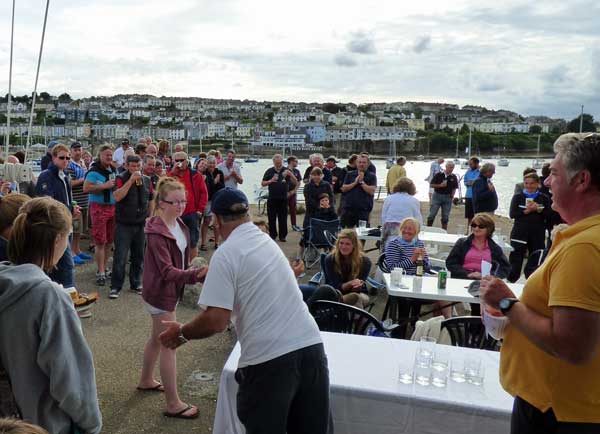Recently a rather unique film came into the possession of Flushing Sailing Club. Or rather, several pieces of amateur 8mm or Super8 film were given to the Club on a DVD. They mostly cover the 1971 Flushing Village Regatta. Jack Penty has re-edited them into a coherent whole which gives a fascinating insight to life at FSC 50 years ago.
Martin Eddy, who was present (can you find him?) also unearthed the Sailing Instructions for the Flushing Regatta of 19th August 1967. He put a commentary to the film which was published in the Club's Newsletter, Mainsheet. An edited version is presented here.
Flushing Village Regatta, 1971The stunning design for the new club features an elevated view for Race Control. Fifty years ago the Race Officer a sat rather precariously on a highchair to obtain a clear view of the line and called orders from above. But after a few years it was removed and the Race Officer came back to Earth. The Race Officer, ops room team and flags all had to work alongside the gunner. While every helmsman loves to hear the gun as he crosses the finishing line those who spent the day in close proximity to the cannon took a different view.
The wonderful film of the 1971 Flushing Regatta brought back memories of my days as a schoolboy boat spotter in the ’sixties and a lockdown clear out has yielded the Sailing Instructions for the 1967 regatta.
My father David put in many years on the quay spotting and recording.He seemed to know the name and sail number of every boat in the port and I became his apprentice. As the film taken just four years later shows all the boats started and finished on the club line. The morning yacht classes were sent out into the bay and the plan was they would be finished before the afternoon starts commenced – it didn’t always work out that way.
The handicap dinghy classes must have included every design under the sun from Solos to 18 foot Jollyboats, from Hornets to the Delta from Helford. A seventeen-strong fleet of Wayfarers completed the morning programme and brought the number of starters up to 105. Ospreys came from Mounts Bay and the Scorpions from Porthpean. The Flying Fifteens were a mix of the Restronguet fleet and visiting boats and this would also apply to the Fireflies, blue-sailed Enterprises and catamarans. Flushing itself had a keen dinghy contingent, not least because the docks had a thriving sailing club and many boats were built, raced and pampered by docks workers and their families. The GP14s were very strong and class luminaries included a young Neil Andrew, Bernard and Shirley Trenoweth and a grateful Bill Hunt who needed the escape from the hopeless task of trying to teach me physics and chemistry at the grammar school. Albacores also had a regular showing at Flushing and both fleets were again boosted by visitors. For the juniors the Cadet still reigned in 1967 but the prolific growth of the Mirror was soon to take over.
The Working Boats were first away in the afternoon and raced as one class on a hotly debated handicap basis – some things never change! A lot of the boats still dredged and by the early seventies class numbers were swelled by the 23- and 28-footers emerging from Terry Heard’s yard at Tregatreath. This led to the class agreeing to carry sail numbers to give the poor spotters a chance.
After a hectic hour of furious ticking and crossing out on entry sheets the afternoon total came to 127, making it 232 starters for the day spread over just seven courses and one start/finish line. I can’t remember what the weather was, the 1971 film looks like a breezy south–westerly and this was par for the course for Flushing Regatta. When all was safely gathered in the well earned drinks flowed in the then new clubhouse – apart from one disgruntled school boy who had to make do with a shandy.




